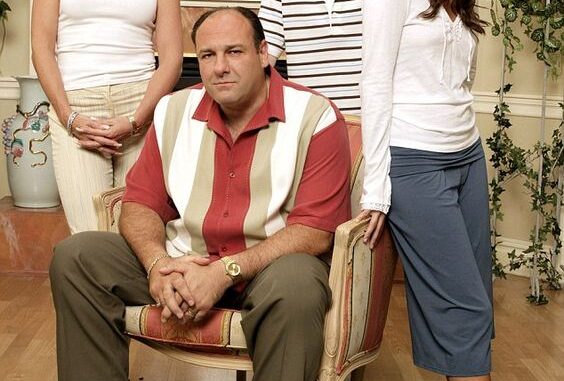
The Sopranos, one of the most iconic and groundbreaking television shows of all time, was not an instant success. In fact, it very nearly didn’t make it to air at all. The show’s journey from an ambitious idea to a cultural phenomenon was riddled with obstacles, including the hesitation of its eventual home, HBO. But it was a shocking change made by the series’ creator, David Chase, that ultimately convinced HBO to take the risk on the show that would go on to change the television landscape forever.
The Early Struggles: A Tough Sell
In the late 1990s, David Chase, a seasoned television writer and producer, was developing The Sopranos — a show about an Italian-American mob boss, Tony Soprano, balancing his family life with the often violent and dangerous world of organized crime. Chase, who had previously worked on series like The Rockford Files and The X-Files, pitched the idea to several networks, but his vision was met with skepticism.
At the time, television was dominated by more traditional formats, especially procedurals and sitcoms. A gritty, character-driven drama about a mobster wasn’t something many executives were eager to take a chance on. Even HBO, which was beginning to explore more ambitious programming, was unsure about The Sopranos. Despite its potential, the series was considered too dark, too violent, and too different from anything else on TV.
David Chase’s Radical Change
After several failed attempts to secure a deal for the show, David Chase made a key creative decision that would prove to be a game-changer. Originally, The Sopranos was conceived as a traditional mob drama, where the focus would be heavily on the criminal activities of Tony Soprano. However, Chase realized that the character-driven storylines and the psychological complexity of Tony’s personal life could serve as a deeper and more compelling foundation for the show.
The shocking change came when Chase decided to make Tony Soprano’s mental health a central aspect of the narrative. Instead of focusing solely on Tony’s life as a mob boss, the show would explore his struggles with depression, anxiety, and therapy. In a moment of revelation, Chase introduced the idea that Tony would regularly see a therapist, Dr. Jennifer Melfi, which was an unusual and unexpected twist for a gangster.
This shift in direction was not just about adding a therapist character; it was about changing the way viewers would engage with Tony. Rather than simply being a ruthless mobster, Tony became a character with complex, relatable human emotions. His sessions with Dr. Melfi allowed the audience to dive deeper into his psyche, revealing his vulnerabilities, fears, and inner conflicts.
The Transformation of Tony Soprano
The character of Tony Soprano was no longer just a mob boss. He was a man grappling with the pressures of his life, trying to make sense of his own existence, and struggling to reconcile his violent profession with his role as a father and husband. By making Tony’s therapy sessions a focal point of the show, Chase opened up an entirely new dimension for the character and for the series.
This shift in tone, from a typical mob story to a psychological exploration of a complex anti-hero, was what made The Sopranos stand out from anything that had come before it. Tony’s mental health struggles provided a humanizing lens through which viewers could understand and even sympathize with a character who, on the surface, was morally questionable.
HBO Takes the Risk
When David Chase pitched this new version of The Sopranos to HBO, the network was intrigued but still hesitant. The concept of a mobster in therapy was groundbreaking, but the show’s dark and introspective nature still raised doubts. However, after some deliberation, HBO saw the potential of the series to push boundaries and redefine what television could be. They decided to take a gamble on the show, ordering a pilot.
It was this reimagining of The Sopranos—centered on Tony’s psychological complexity and his internal struggles—that ultimately convinced HBO to greenlight the series. The shocking change had paid off. HBO had found its next big hit, a show that would attract critical acclaim and become one of the defining series of the new golden age of television.
The Sopranos Revolutionizes TV
When The Sopranos premiered in 1999, it was unlike anything television had seen before. The series broke away from traditional storytelling, combining elements of crime drama, dark comedy, and psychological exploration. Its exploration of family dynamics, mental health, and moral ambiguity resonated with audiences and critics alike. Tony Soprano, as played by James Gandolfini, became a cultural icon, and The Sopranos paved the way for future anti-heroes like Walter White in Breaking Bad and Don Draper in Mad Men.
The show also changed the way television was produced, with a greater emphasis on long-form storytelling and complex character development. In many ways, The Sopranos was the catalyst for the rise of prestige television, showing that TV could be just as impactful and sophisticated as film.
Conclusion: A Shocking Change That Defined a Legacy
The journey of The Sopranos from a show that was almost never made to a cultural phenomenon is a testament to the creative vision of David Chase and his willingness to take risks. By shifting the focus from a typical mob narrative to a deep psychological exploration of Tony Soprano’s life and struggles, Chase transformed the show into something that would resonate on a much deeper level with audiences.
It was this bold, shocking change—introducing therapy as a central theme—that convinced HBO to pick up the show. And once they did, The Sopranos became an instant classic, changing the landscape of television and cementing its place in history. Without that pivotal creative decision, the show might have never made it off the ground, and the golden age of television that followed could have been very different.
